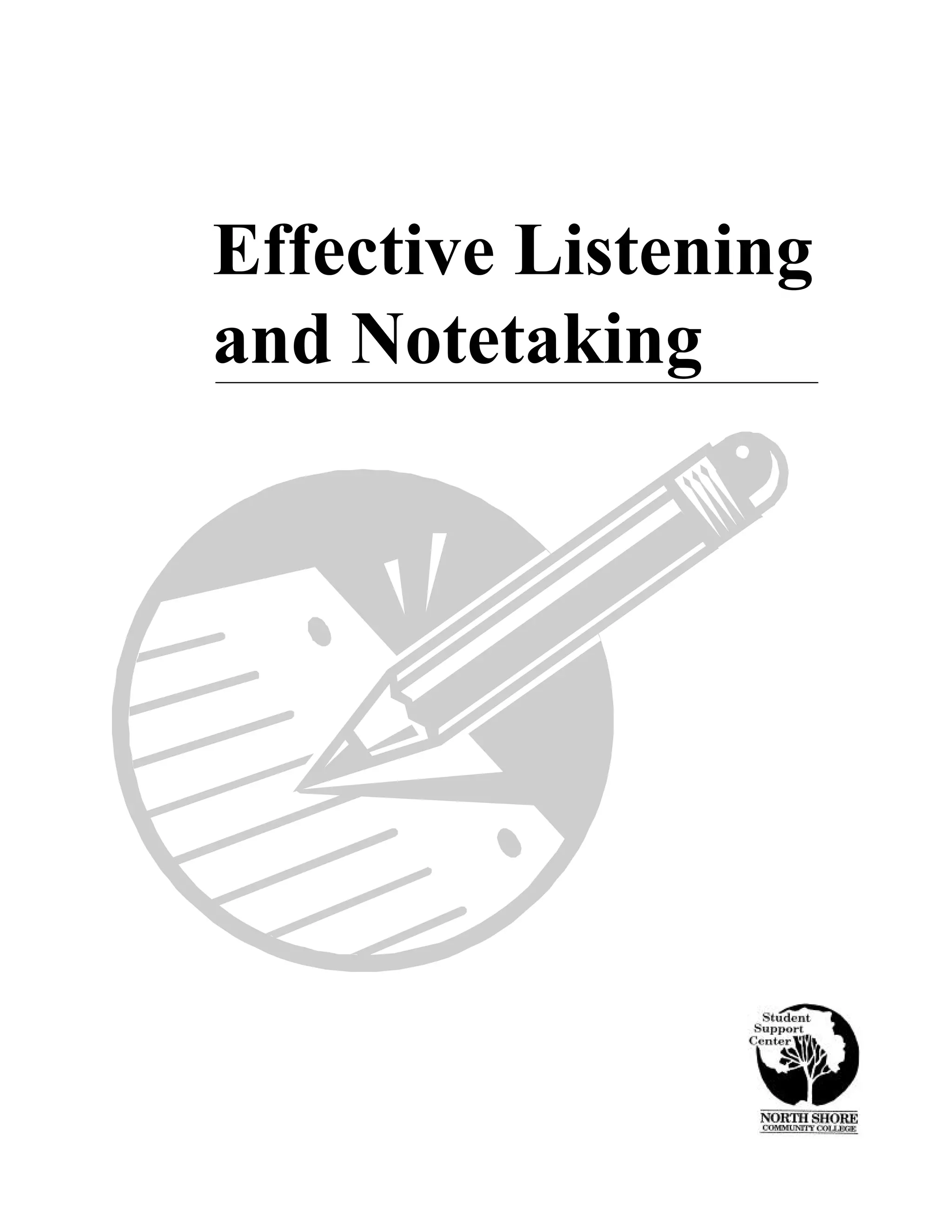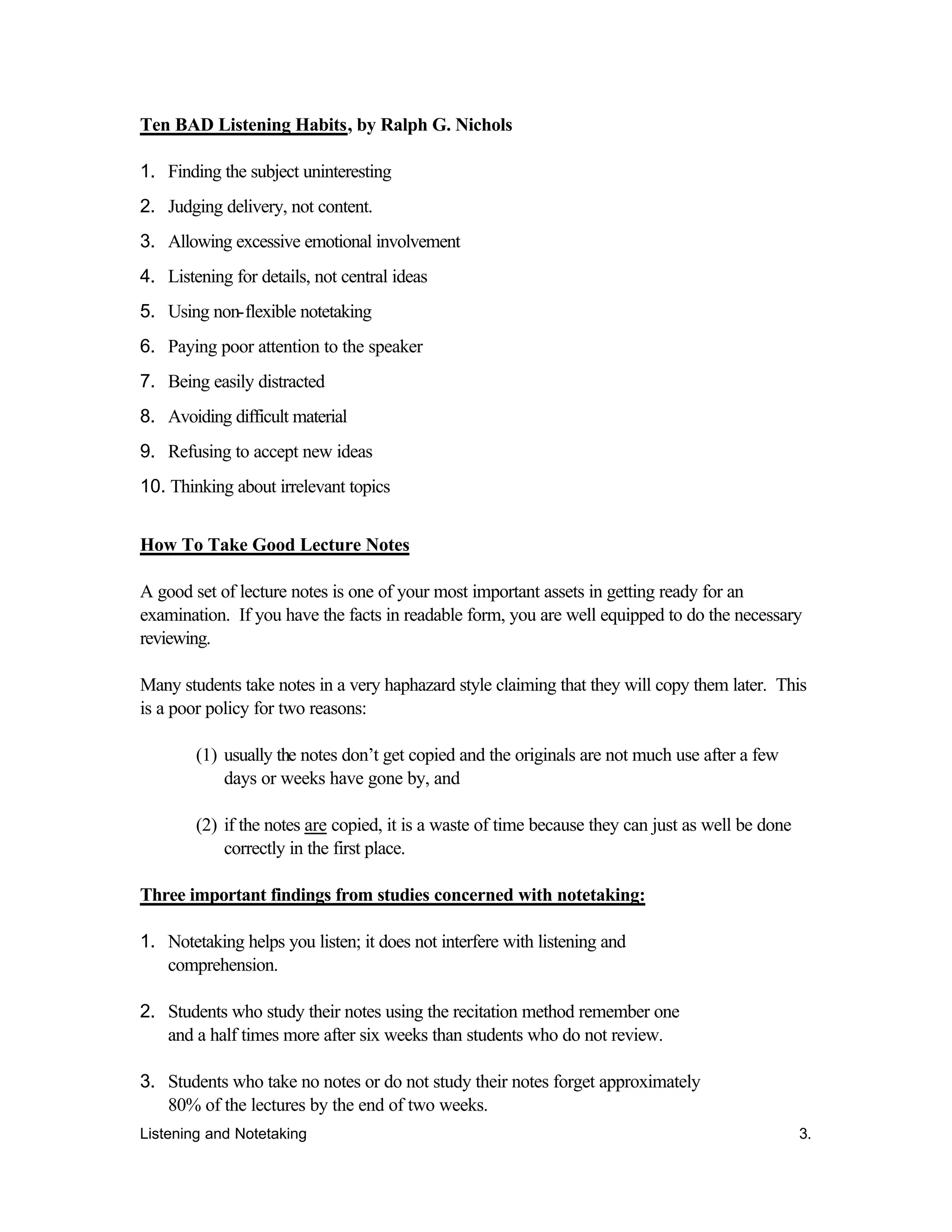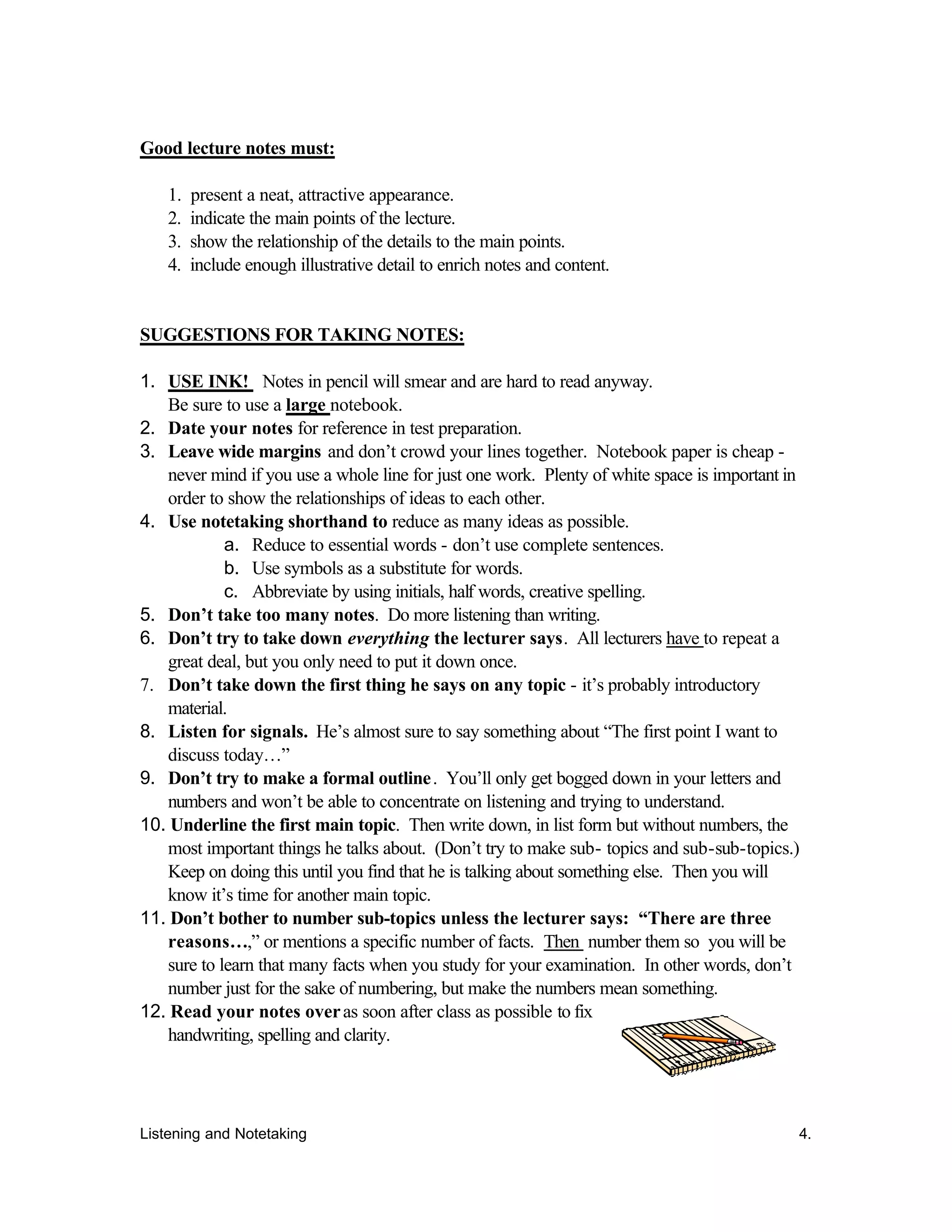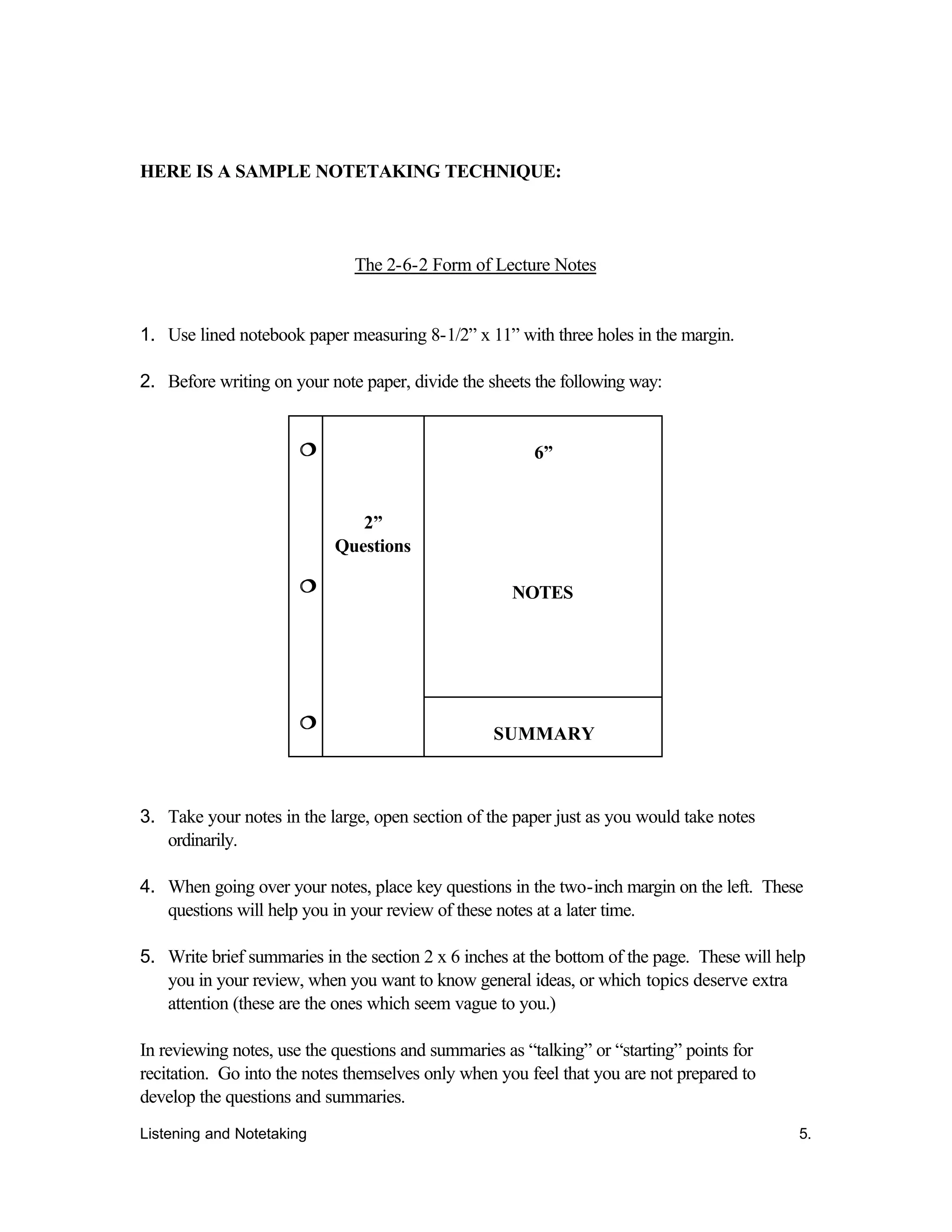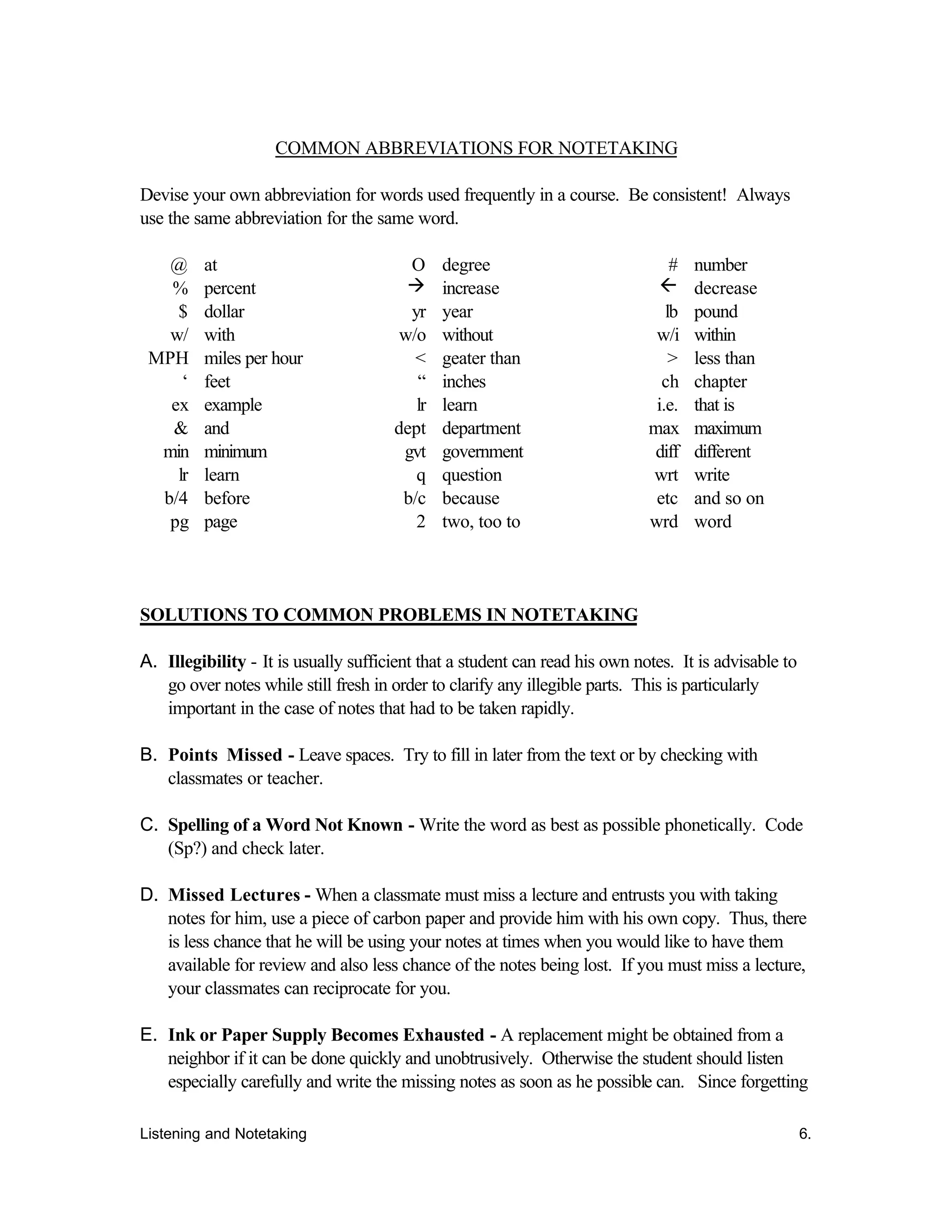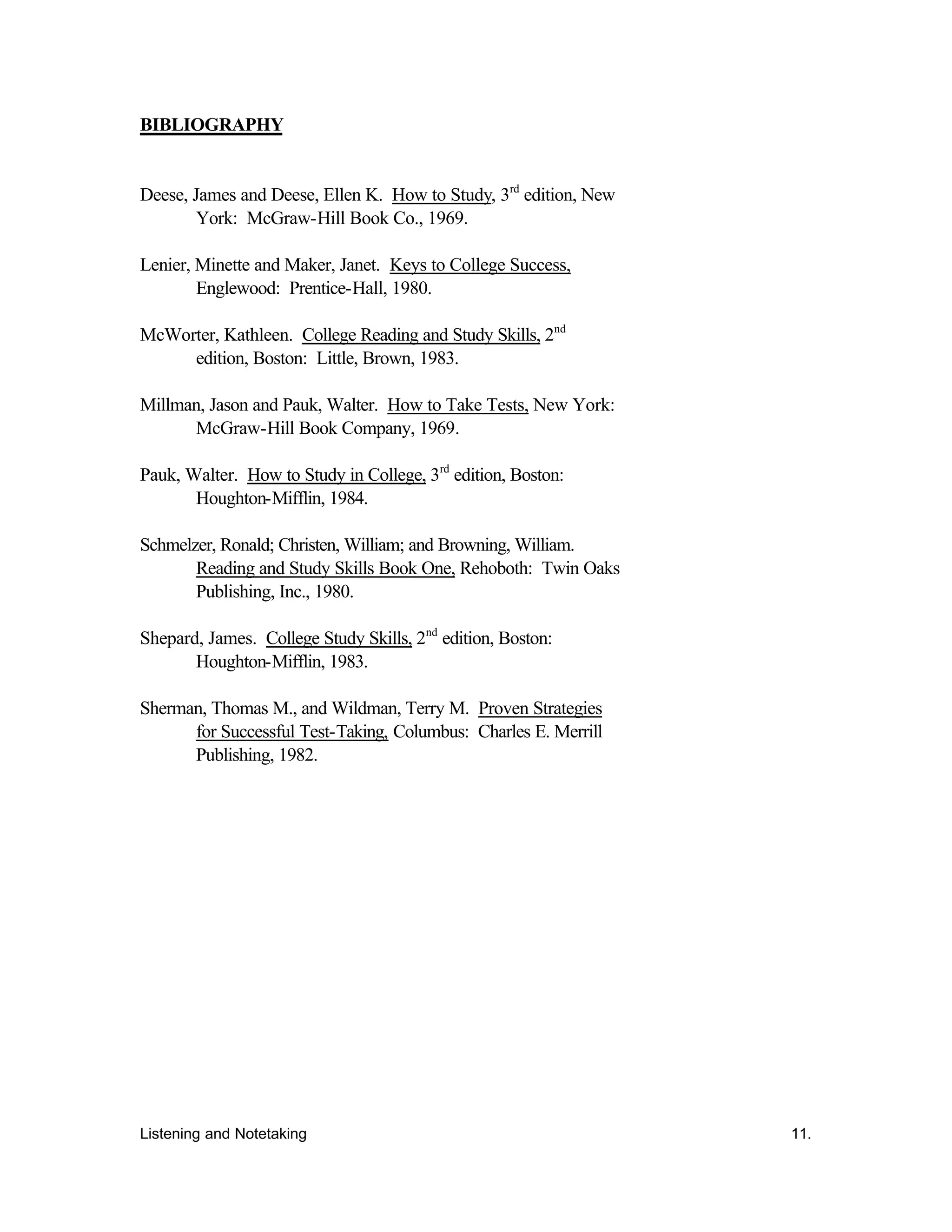This document provides tips and techniques for effective listening and notetaking in lectures. It discusses the importance of listening since most knowledge is gained that way. Specific recommendations are given for listening, such as being prepared and recognizing important points. Notetaking techniques are also outlined, including taking concise notes using abbreviations and leaving space. Mapping is presented as an alternative to linear notetaking that shows relationships between ideas. The document concludes by addressing common notetaking problems and improving handwriting.
